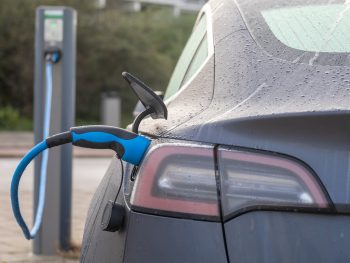Over half of councils ‘in the dark’ on working status of EV chargers
Council investment in EV infrastructure is surging but more than half are unaware of the working status of chargers.

Over half of councils said they were unable to monitor whether chargers were working or not
A freedom of information request by Schneider Electric found that councils in Britain are increasing investment in EV infrastructure by as much as 42% year on year.
But the FOI data, which surveyed 67 councils across England, Scotland and Wales, also discovered that only 15% of councils could report that 100% of their EV chargers are operational.
Over half (53.7%) are unable to monitor whether chargers are working or not. The lowest reported fully operational charger percentage was 2.8% working in the last six months.
David Hall, Schneider Electric UK & Ireland’s VP power systems, said: “Whilst there’s a positive story that councils are investing in their EV charger infrastructure to meet the growing demand, it is clear that many councils could greatly benefit from the ability to track EV charger performance, detect faults or outages, and even enable remote repairs. Without it, reliability is called into question, potentially leaving EV drivers in their areas stranded.
“Increasing awareness and education around remote monitoring systems would support local councils and EV charging providers, particularly at high-demand locations such as motorway services or city/town centres, where usage will surge as EV adoption grows.”
Despite this, the data does reveal that, as the UK gears up for a ban on conventional petrol and diesel cars vehicles by 2030, there have been some developments, including a 140% rise in the number of public EV chargers between 2022 and 2023.
The highest five-year investment amount was £8,000,000 by a single council. But 40% of councils have either spent nothing in that same time period, or were unable to provide the figure.
The study also found that of the 2,555 devices installed by councils, only 52 or 2.04% of devices are ultra-rapid charging (over 100kW).
Schneider Electric said that while the number of ultra-rapid chargers is low, it remains important to have smart medium- and low-voltage infrastructure within the network. A balanced mix of charging speed and the right infrastructure to support the EVs onsite is essential. Also, proper assessments of the grid’s availability may reveal ultra-rapid charging isn’t viable in that location.
Schneider Electric UK & Ireland’s David Hall went on: “Ideally, greater collaboration between charging providers and their suppliers – across both the public and private sectors – will help ensure a more reliable and seamless charging experience – both before install and after. Making sure councils have the right plan in place to plot the EV charging infrastructure will be essential for long-term success.”
Council EV chargingSchneider Electric














Leave a comment